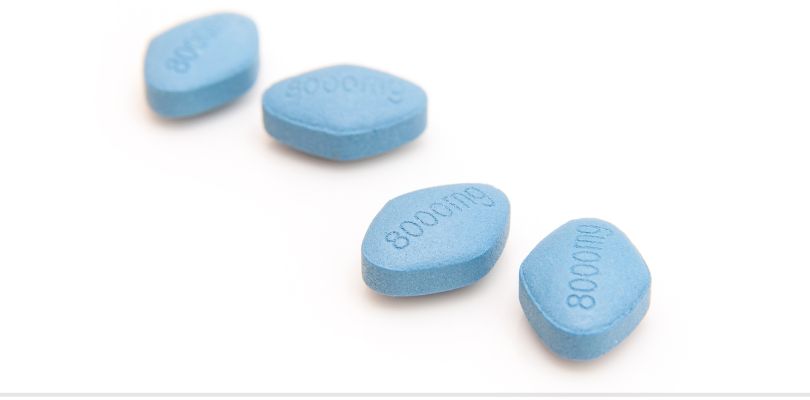Treatment Doesn’t Have to be Hard
Peyronie’s Disease and erectile dysfunction (ED) are two conditions that, while distinct, are closely related. Men can experience both. Using Xiaflex breaks down the collagen buildup in the scar tissue, helping reduce penile curvature and improve symptoms.
Understanding Peyronie's Disease
Peyronie’s Disease is a condition characterized by the development of fibrous scar tissue, known as plaques, within the penis. This scar tissue causes the penis to curve or bend during an erection, leading to pain, discomfort and sometimes difficulty in engaging in sexual activity. The severity of the curvature can vary from mild to severe. In some cases it may lead to a significant reduction in the length of the penis.
Signs and Symptoms of Peyronie’s Disease
- Noticeable curvature or bend in the penis during erections.
- Pain during erections or sexual activity.
- Erectile dysfunction (difficulty achieving or maintaining an erection).
- Shortening of the penis.
- Palpable lumps or hard areas under the skin of the penis.
Understanding Erectile Dysfunction
ED is a condition that causes difficulty achieving or maintaining an erection. It can be caused by various factors, including psychological, hormonal, vascular and neurological issues. It's a common condition that affects many men, particularly as they age.
Signs and Symptoms of Erectile Dysfunction
- Difficulty achieving an erection.
- Difficulty maintaining an erection during sexual activity.
- Reduced sexual desire or libido.
- Anxiety or stress related to sexual performance.
Specialists at an asthma clinic can accurately diagnose symptoms and create an effective treatment plan. Learn more here.
The Link Between Peyronie’s Disease and Erectile Dysfunction
The relationship between Peyronie’s Disease and ED is complex and bidirectional. Peyronie’s Disease can directly cause ED due to the physical changes in the penis, such as the curvature and pain, which can make it challenging to achieve or maintain an erection. Additionally, the psychological impact of having Peyronie’s Disease, including anxiety, stress and lowered self-esteem, can contribute to ED.
On the other hand, men with pre-existing ED can be more prone to developing Peyronie’s Disease. This is because ED can lead to incomplete erections. When this happens, it increases the risk of penile injury during sexual activity which can potentially result in the development of scar tissue and subsequent Peyronie’s Disease.
Treatment Options for Peyronie’s Disease
The treatment of Peyronie’s Disease focuses on reducing pain, correcting penile curvature and improving sexual function. The choice of treatment depends on the severity of the condition and the degree to which it affects the patient’s quality of life.
1. Xiaflex (Collagenase Clostridium Histolyticum)
Xiaflex is an FDA-approved injectable treatment for Peyronie’s Disease. It works by breaking down the collagen in the scar tissue, which can help reduce the curvature of the penis. Xiaflex is typically used in men with moderate to severe curvature and is administered in a series of injections directly into the plaque.
2. Oral Medications
Oral treatments such as pentoxifylline may be prescribed to reduce the formation of scar tissue. However, the effectiveness of oral medications is still under investigation.
3. Shockwave Therapy
Low-intensity shockwave therapy may be used to break down the plaques and improve blood flow, although more research is needed to confirm its efficacy.
4. Surgery
In severe cases where the curvature is significant and does not respond to other treatments, surgical options such as plication, grafting or penile implants may be considered.
Treatment Options for Erectile Dysfunction
Treating ED often requires addressing the underlying cause, which can vary from psychological to physiological factors.
1. Phosphodiesterase Type 5 (PDE5) Inhibitors
Medications such as sildenafil (Viagra), tadalafil (Cialis) and vardenafil (Levitra) are commonly prescribed to improve blood flow to the penis and help achieve an erection.
2. Vacuum Erection Devices
These devices create a vacuum around the penis, drawing blood into the shaft and causing an erection. A constriction ring is then applied to maintain the erection during intercourse.
3. Hormone Therapy
If ED is due to low testosterone levels, hormone replacement therapy may be recommended.
4. Psychological Counseling
For men whose ED is linked to anxiety, stress or other psychological factors, counseling or therapy can be an effective treatment.
Differentiating and Linking the Conditions
While Peyronie’s Disease and ED are distinct conditions, they are closely linked. Peyronie’s Disease is primarily a structural issue caused by scar tissue formation, while ED can result from both physical and psychological factors. The key difference lies in their origins: Peyronie’s involves physical changes in the penis, whereas ED may or may not involve physical changes and can also be influenced by mental health.
However, the presence of Peyronie’s Disease can exacerbate ED by introducing a physical barrier to achieving a straight, functional erection. This interplay means that treating one condition may help alleviate the other, particularly in cases where Peyronie’s Disease is the primary cause of ED.







